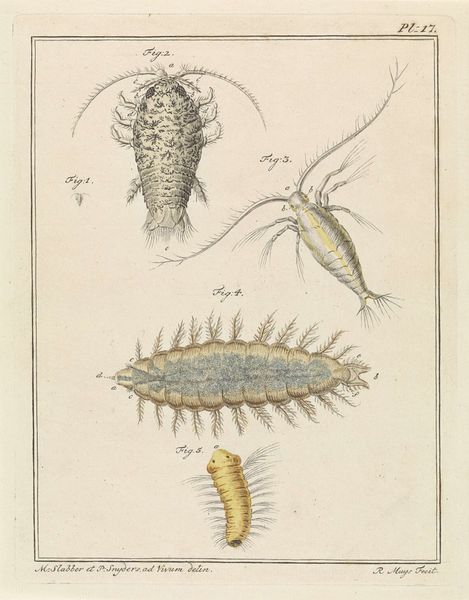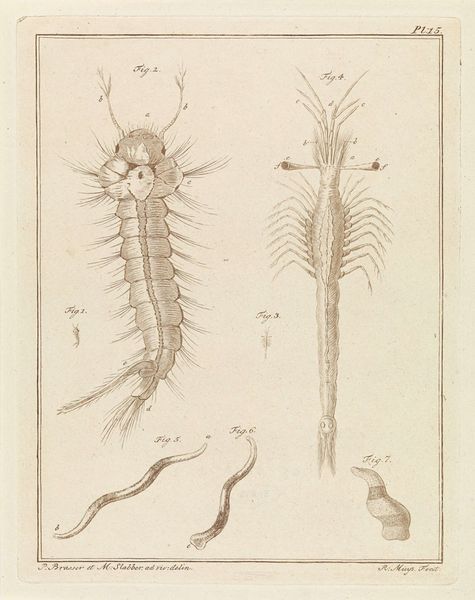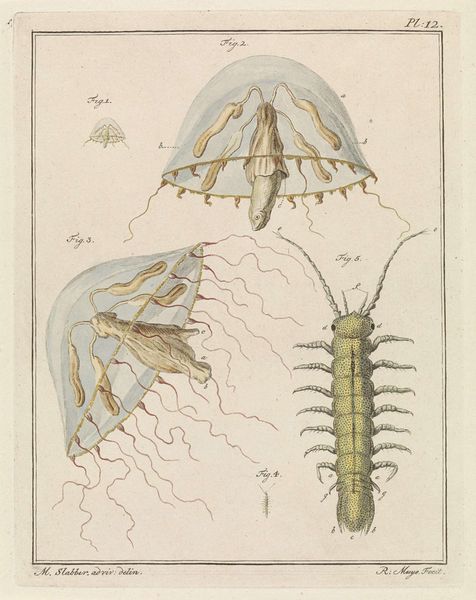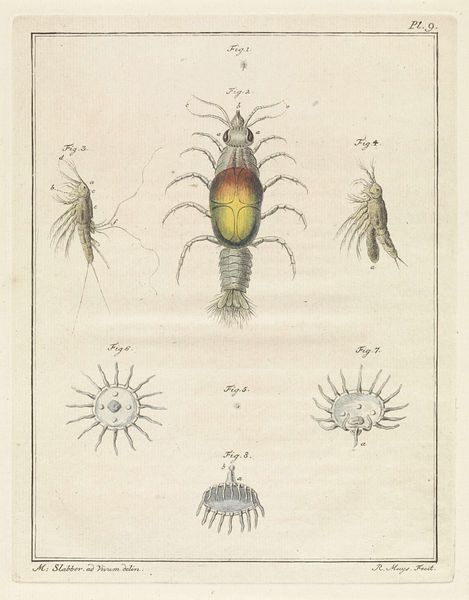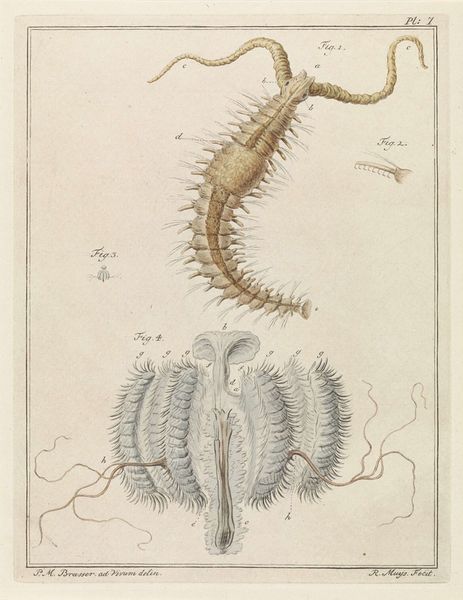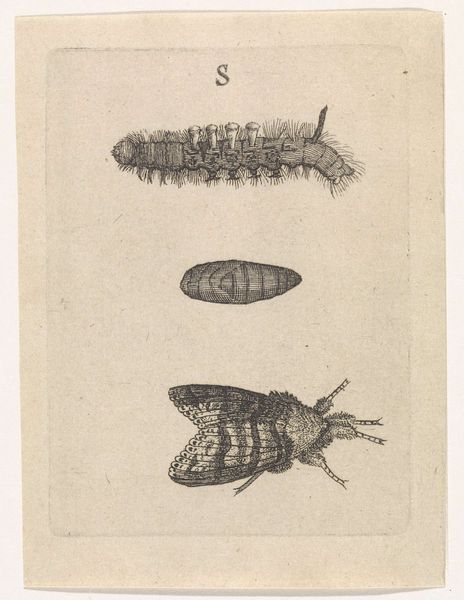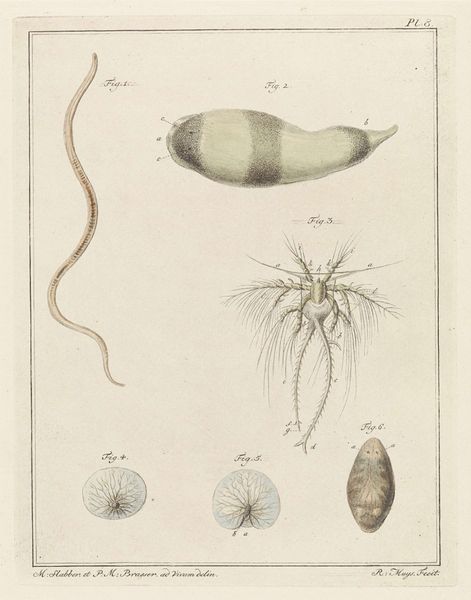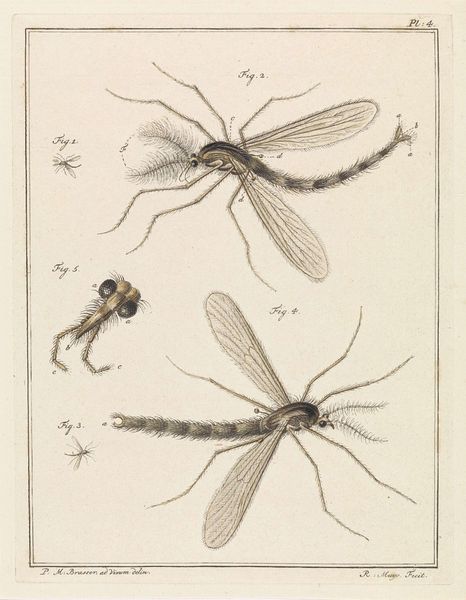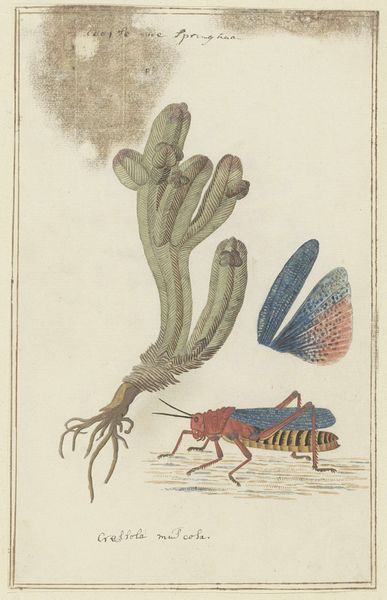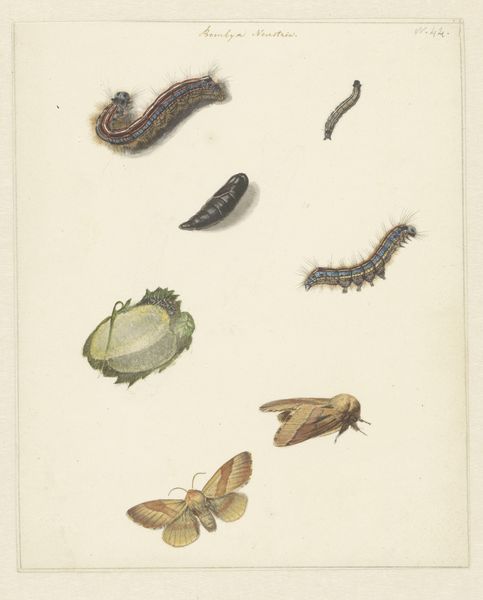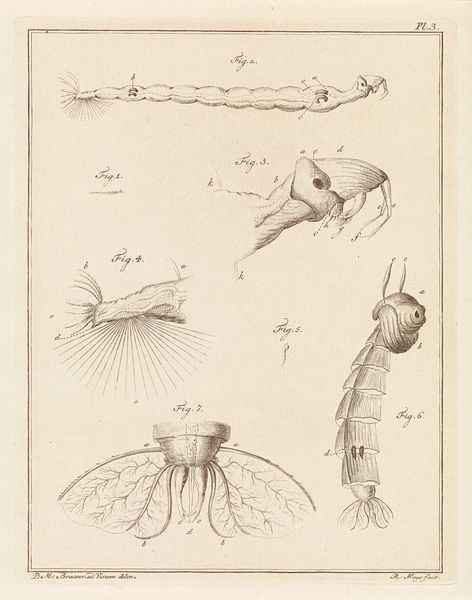
drawing, paper, watercolor, ink
#
drawing
#
paper
#
watercolor
#
ink
#
coloured pencil
#
realism
Dimensions: height 206 mm, width 161 mm
Copyright: Rijks Museum: Open Domain
Editor: This is "Steekmug, Slabbers trompetoog en een worm" a drawing made with ink and watercolor on paper in 1778. The artist is Robbert Muys. The detail is incredible! It’s like a scientific illustration. What exactly should we be looking at? Curator: Note how Muys delineates the various insect forms. Consider the stark contrast between the light paper ground and the meticulously rendered details. The lines themselves, their weight and modulation, create the forms and suggest a kind of anatomical realism. What does the relationship between the different creatures depicted imply? Editor: Well, they all seem to exist within the same plane, almost as if they’re specimens under glass. The color palette is restricted; a natural palette which feels objective but the composition is what grabs me. How should someone decode this kind of formalist approach to realism? Curator: Semiotics helps us. The image seems structured to show, rather than invite an emotional reaction. Every element adheres to realistic proportions and coloration but are scientifically organized. Does that lack of emotional invitation perhaps affect your viewing? Editor: I guess so, I was initially put off by how clinical it seemed. I hadn't realized the organization also contributed to that feeling. I see the picture now less as art and more as an observation of its period. Curator: Precisely! Its visual vocabulary reveals much about the intersection of science and art during the late 18th century, what do you think? Editor: Now I recognize that, and my interpretation changed! It’s interesting how studying simple details—line, color, form—leads us to grasp its real values.
Comments
No comments
Be the first to comment and join the conversation on the ultimate creative platform.
